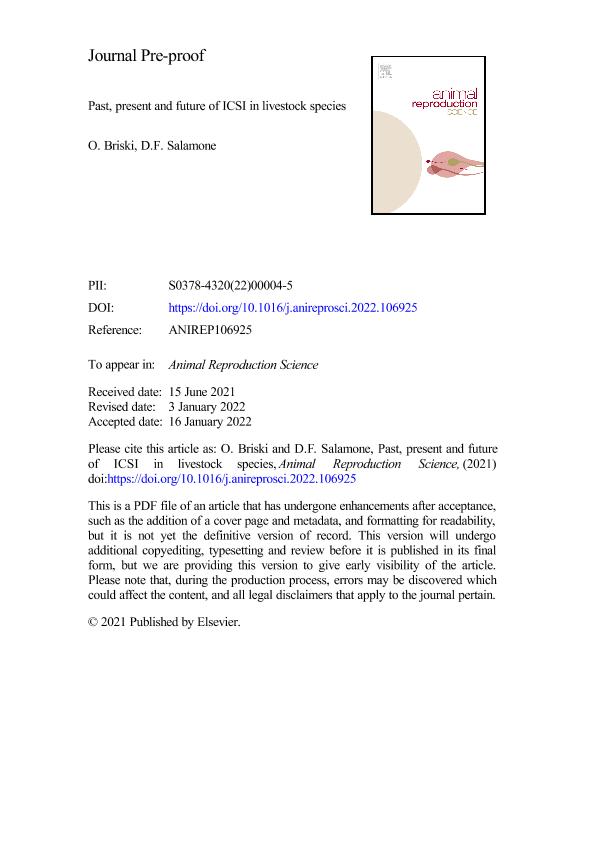Mostrar el registro sencillo del ítem
dc.contributor.author
Quaggiotto, M. Martina
dc.contributor.author
Sánchez Zapata, José A.
dc.contributor.author
Bailey, David M.
dc.contributor.author
Payo Payo, Ana
dc.contributor.author
Navarro, Joan
dc.contributor.author
Brownlow, Andrew
dc.contributor.author
Deaville, Rob
dc.contributor.author
Lambertucci, Sergio Agustin

dc.contributor.author
Selva, Nuria
dc.contributor.author
Cortés Avizanda, Ainara
dc.contributor.author
Hiraldo, Fernando

dc.contributor.author
Donázar, José Antonio

dc.contributor.author
Moleón, Marcos
dc.date.available
2023-07-05T16:16:27Z
dc.date.issued
2022-04
dc.identifier.citation
Quaggiotto, M. Martina; Sánchez Zapata, José A.; Bailey, David M.; Payo Payo, Ana; Navarro, Joan; et al.; Past, present and future of the ecosystem services provided by cetacean carcasses; Elsevier Academic Press Inc.; Ecosystem Services; 54; 4-2022; 1-10
dc.identifier.uri
http://hdl.handle.net/11336/202474
dc.description.abstract
Ecosystem services associated with cetacean strandings have been altered by humans through exploitation of wild populations during the whaling era and more recently by regulations on carcass management and disposal to abide by environmental health requirements. Here, we systematically review the scientific literature and gather data on cetacean strandings worldwide to: 1) identify the ecosystem services provided by stranded cetacean carcasses in the past and present; 2) estimate the density of cetacean strandings currently occurring in selected coastal areas around the globe, and analyse its association with human population density and regulations; and 3) identify and discuss the regulations and methods concerned with whale carcass disposal in specific regions of the world. Our literature review revealed that stranded cetacean carcasses have provided a rich and varied array of provisioning, regulating, cultural, and supporting ecosystem services to ancient and modern civilisations worldwide. Also, we found that the current density of stranded carcasses (mean: 0.090 strandings • year−1 • km−1; range: 0.001–0.978) and the disposal methods widely varied across the studied regions and countries. In addition, neither human population density nor the existence of regulations were good predictors of stranding densities. Finally, we provide recommendations for the future management of stranded cetacean carcasses, by identifying those disposal methods that minimize costs and maximize ecosystem functions and services. In particular, we encourage natural decomposition in situ whenever possible; otherwise, the present coastal management strategies could be improved by including zoning, seasonal use limitation and educational outreach depending upon the local scenario. Overall, further socio-ecological research is strongly needed to guide stranded cetacean carcass management towards enhancing the net benefits that humans and ecosystems gain from carcasses, especially considering that coastal areas become more populated, new disposal regulations are approved, and cetacean populations are recovering – and thus strandings may become more frequent.
dc.format
application/pdf
dc.language.iso
eng
dc.publisher
Elsevier Academic Press Inc.

dc.rights
info:eu-repo/semantics/openAccess
dc.rights.uri
https://creativecommons.org/licenses/by-nc-sa/2.5/ar/
dc.subject
CARRION
dc.subject
DOLPHIN
dc.subject
ECOSYSTEM FUNCTION
dc.subject
MANAGEMENT
dc.subject
STRANDING
dc.subject
WHALE
dc.subject.classification
Ecología

dc.subject.classification
Ciencias Biológicas

dc.subject.classification
CIENCIAS NATURALES Y EXACTAS

dc.title
Past, present and future of the ecosystem services provided by cetacean carcasses
dc.type
info:eu-repo/semantics/article
dc.type
info:ar-repo/semantics/artículo
dc.type
info:eu-repo/semantics/publishedVersion
dc.date.updated
2023-06-29T10:07:52Z
dc.identifier.eissn
2212-0416
dc.journal.volume
54
dc.journal.pagination
1-10
dc.journal.pais
Países Bajos

dc.journal.ciudad
Amsterdam
dc.description.fil
Fil: Quaggiotto, M. Martina. University of Stirling; Reino Unido
dc.description.fil
Fil: Sánchez Zapata, José A.. Universidad de Miguel Hernández; España
dc.description.fil
Fil: Bailey, David M.. University of Glasgow; Reino Unido
dc.description.fil
Fil: Payo Payo, Ana. School of Biological Sciences Zoology Building; Reino Unido
dc.description.fil
Fil: Navarro, Joan. Consejo Superior de Investigaciones Científicas. Instituto de Ciencias del Mar; España
dc.description.fil
Fil: Brownlow, Andrew. University of Glasgow; Reino Unido
dc.description.fil
Fil: Deaville, Rob. The Zoological Society of London; Reino Unido
dc.description.fil
Fil: Lambertucci, Sergio Agustin. Consejo Nacional de Investigaciones Científicas y Técnicas. Centro Científico Tecnológico Conicet - Patagonia Norte. Instituto de Investigaciones en Biodiversidad y Medioambiente. Universidad Nacional del Comahue. Centro Regional Universidad Bariloche. Instituto de Investigaciones en Biodiversidad y Medioambiente; Argentina
dc.description.fil
Fil: Selva, Nuria. Polish Academy of Sciences; Argentina
dc.description.fil
Fil: Cortés Avizanda, Ainara. Consejo Superior de Investigaciones Científicas. Estación Biológica de Doñana; España
dc.description.fil
Fil: Hiraldo, Fernando. Consejo Superior de Investigaciones Científicas. Estación Biológica de Doñana; España
dc.description.fil
Fil: Donázar, José Antonio. Consejo Superior de Investigaciones Científicas. Estación Biológica de Doñana; España
dc.description.fil
Fil: Moleón, Marcos. Universidad de Granada; España
dc.journal.title
Ecosystem Services
dc.relation.alternativeid
info:eu-repo/semantics/altIdentifier/url/https://www.sciencedirect.com/science/article/pii/S221204162200002X
dc.relation.alternativeid
info:eu-repo/semantics/altIdentifier/doi/http://dx.doi.org/10.1016/j.ecoser.2022.101406
Archivos asociados
